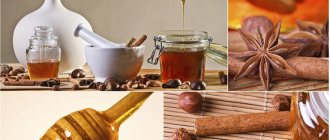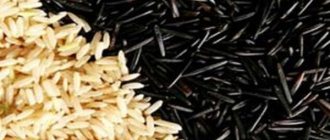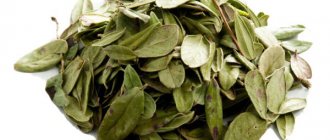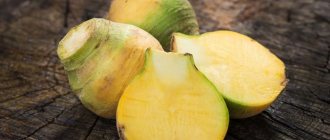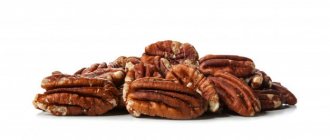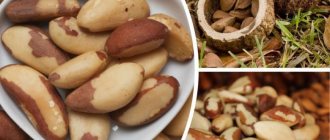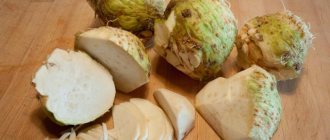Compound. Content of vitamins, micro and macroelements
The aerial part of thyme is characterized by a high content of vitamins :
- 0.348 mg - B6;
- 283 mg - A;
- 0.471 - B2;
- 160.1 mg - C;
- 0.048 mg - B1;
- 45 mcg - B9;
- 2.851 mg - beta-carotene;
- 0.409 mg - B3;
- 1.824 mg - PP (niacin equivalent).
In addition to them, the plant contains:
Macronutrients:
- 9 mg sodium;
- 405 mg calcium;
- 609 mg potassium;
- 160 mg magnesium;
- 160 mg phosphorus.
Microelements:
- 1.81 mg zinc;
- 1.719 mg manganese;
- 17.45 mg iron;
- 555 mg copper.
Calorie content. How many calories are in 100 grams? product?
The nutritional value of thyme lies in its content:
- Protein - 5.56 g - 12.1% of the daily value;
- Fat - 1.68 g - 3%;
- Carbohydrates - 10.45 g - 4.2%;
- Ash - 3.2 grams;
- Unsaturated fatty acids - 0.467 g;
- Water - 65.11 g;
- Dietary fiber - 14 g - 70%.
The calorie content of thyme is 101 calories per 100 grams of product.
The benefits and beneficial properties of thyme for human health
The pharmacological medicinal properties of the plant are very extensive, using it in certain doses you can:
- prevent the development of cardiovascular diseases;
- strengthen the body's immune defense;
- get rid of chronic fatigue syndrome and depression.
Thymol contained in thyme (an excellent antiseptic, merciless against various types of fungi, parasites and viruses) helps normalize intestinal function by normalizing its microflora.
Being a source of vitamin B6, it is necessary in the fight against diseases such as hypovitaminosis, atherosclerosis, radiculitis, neuralgia, psoriasis, diabetes and others.
The prepared thyme decoction acts as a diuretic, anticonvulsant and antispasmodic.
Benefits for men
Proper use of the medicinal herb - thyme - will allow men to maintain health and potency, increase testosterone production and improve sperm quality.
To combat erectile dysfunction, the following remedy is prepared:
- 3 parts of thyme and 1 part of St. John's wort, linden, mint, rose hips, oregano are mixed;
- pour a spoonful of the mixture with boiling water (a glass) and close it in a thermos for 12 hours;
- The infused decoction is drunk three times, a couple of tablespoons a day, to get rid of impotence.
Thyme helps to cope with baldness and strengthen nail plates - for this, the essential oil of the plant is periodically rubbed into the area of the body that needs treatment.
Thyme compresses help heal muscle inflammation. They are treated by applying raw materials, previously brewed and squeezed through gauze, to the diseased part of the body.
Benefits for women
Thyme is used by women mainly for cosmetic purposes because the plant:
- has a beneficial effect on hair structure and thickness;
- helps to say goodbye to dandruff;
- good for the skin - eliminates acne;
- promotes rapid healing of skin lesions.
A decoction of thyme is useful for hair, which is prepared by brewing a tablespoon of the above-ground part of the plant in a glass of boiling water. The prepared mixture is boiled over low heat for 5 minutes, and then left for half an hour. The cooled broth is filtered and used as a rinse.
Benefits for weight loss (with diet)
The popular opinion that thyme promotes rapid weight loss is fundamentally wrong - thyme has absolutely no fat-burning effect. But it is also incorrect to say that the plant has no benefits at all.
In combination with dietary nutrition and strength training, thyme has an excellent effect on digestion, normalizing and stabilizing metabolic processes. Thyme and mint tea perfectly relieves headaches and also helps relieve swelling by removing excess fluid.
Since thyme has a special aroma, it is often used as a seasoning - adding it to unleavened dishes can make them appetizing and even be enjoyed while on a diet.
Description of thyme
Thyme
If you still don’t know what secret this fragrant herb hides, now I’ll reveal it to you. Thyme and thyme are not different spices at all, but the same greens!
Under these two completely different names lies a numerous genus of aromatic plants, of which scientists number more than 300. In Latin it sounds like Thymus.
So, thyme, also known as thyme, is perhaps one of the most densely populated genera of the Lamiaceae family, which also includes mint, basil, rosemary, sage, marjoram, lemon balm, and oregano. And also horehound, censer, tenacious, white-haired moth, molucella, bristletail and nutcracker. These are such diverse relatives!
By the way, if you see the word “thyme” somewhere, do not rush to accuse its author of illiteracy. Yes, we are accustomed to the fact that it is written with an “a”, but this form also has the right to exist. For some reason!
Moreover, the German linguist Max Julius Friedrich Vasmer argued that in Russian the word “thyme” should be written with an “e”, that is, “thyme”. Somehow it hurts the eyes and ears! I suggest leaving them whole and continuing to call this plant our usual thyme.
The etymology of this term has not yet been precisely clarified and has several interesting versions. Some researchers believe that it comes from the Greek word for courage (“thymon”), while others argue that this word is ambiguous and can also mean “breath of life” and “spirit” (which in the case of aromatic thyme is very logical! ).
There is a third opinion. It says that the name of the genus owes its origin to the Greek word “thyo”, which in the ancient language meant “performing sacrifices”. And the fourth version is that “thyme” is a modified form of the word “thymiama”, that is, “incense”. Which option are you voting for?
